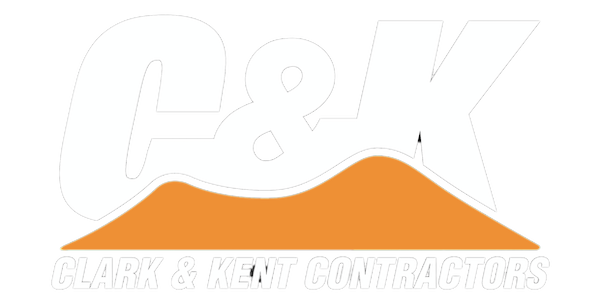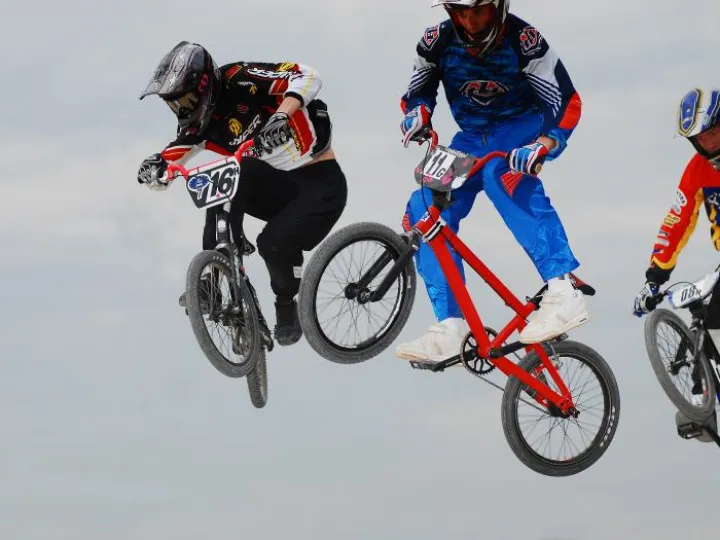BMX bike track training
You don't need a BMX track to build up your skills and riding technique as a BMX biker. Access to a BMX track helps, of course, primarily a purpose-built track designed and constructed by BMX track build specialists Clark & Kent, but all you need to hone your riding skills is an area of Tarmac, grass or flattened dirt.
The practice area needs to be at least 20 square metres. The only other items you need are a BMX bike (obviously), a BMX helmet (again, obviously), and some markers, such as empty drink cartons.
First, check the bike over. It's a bad idea to use a BMX bike that's not in proper order. Not only can this be dangerous, but bike handling skills are better learned on a decent bike.
A small-wheeled BMX bike (20 inches) is better than a big-wheeler (24 inches) as it's far easier to control. Also, ensure the brakes are in good shape, and wear a proper BMX helmet with a chin strap.
Mastering the wheelie
The basic BMX wheelie involves powering up the bike and lifting your front wheel. Getting it right is not as easy as it sounds, but it's the best way to learn the balance point of your machine, a necessary skill for any BMX biker.
First, try pedal power to lift the bike's front wheel. Position your body to control the height, and lean back as you pedal. As you improve, attempt to perform a freewheeling wheelie, with your feet sitting slack on the pedals while your weight gains lift. These 'manuals' are vital skills for controlling your BMX jumps.
Get a fast standing start
Maintaining balance is essential for BMX bike racing, particularly at the start gate. A fast standing start can put you ahead of the pack from the outset, and it is best achieved with both feet on the pedals. Begin by pedalling slowly, then brake until you are almost at a standstill. See how long you can stay upright with horizontal pedals without putting your feet on the ground.
Once mastered, hold the bike steady with one pedal high and the other low. In BMX bike racing, some bikers will set themselves up a few inches back from the start gate, approaching very slowly to get off to a faster standing start. Keep practising until you can keep your bike upright almost effortlessly, with your dominant pedal foot higher.
Learn the bunny hop
Lay a marker on the grass – a plastic bottle will do – then learn to hop over it at speed. Aim to raise the front wheel, followed by the back wheel and have the balanced bike level in mid-air as it flies over the marker. On each pass, try a faster approach and attempt to lift the bike higher.
Once you are confidently clearing the marker, try keeping the front wheel in the air longer so the rear wheel hits the ground first. The aim is to stay in control of the bike on landing. Flex your legs and arms to absorb the shock of landing. Repeat until you can quickly clear the marker and land on the rear wheel.
Learn to slalom with ease
Place markers in a straight line, then weave around them, left and right, at speed. Next, stagger the markers a few centimetres, left and right, so you are forced to 'snake' your way through them. Finally, lay the markers out in a large circle and snake around them at speed without touching them. It is an excellent way to learn to control the bike as it tips left and right, a situation that often occurs in BMX bike racing.
Slide your way to safety
Often, in a BMX race, you may lose control and getting the bike back on the track quickly and efficiently is an essential skill. One of the best ways to learn damage control is the deliberate slide.
Get some speed up then; with one pedal down, remove your foot from the remaining pedal, shift your weight forward and hit the brake to force the bike into a slide. Before the bike goes down, throw your weight into the slide and attempt to get the bike upright before hitting the ground. This exercise is best tried on the grass.
More on training
Racing and ranking
Getting on a BMX bike
How to get ahead in racing
For help with your BMX project, talk to Clark & Kent , specialist builders of BMX tracks and skateparks.
Contact Us
OFFICE
01630 672329
office@clarkkentcontractors.com
Endorsements


